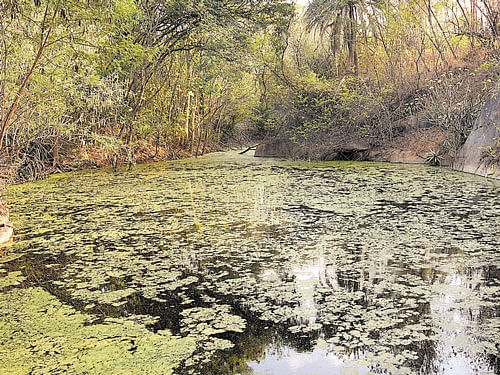
While the once ‘air conditioned’ Bengaluru has become a heat trap with increasing highrises, a mini-forest in the IISc shows how a green lung space can thrive within the city.
Situated in the core area of Bengaluru, the ambience in the 400-acre Indian Institute of Science campus is in stark contrast that of the city. While the streets outside the campus are milling with people and noisy motor vehicles, the stress-free atmosphere within is serene, with lush greenery and many bicycles, besides two-wheelers and cars going around silently. While this is just part of the campus, the 1.5-hectare mini forest has much more to offer and is a perfect habitat for birds and animals.
This kind of green patch is not only an arboretum for evergreen tree species but also serves as home for several fauna and adaptable species. The undisturbed greenery also serves as an efficient carbon sink, trapping free carbon in the atmosphere, bringing the temperature down by a degree.
Encouraging people and the government and even spiritual leaders to replicate a similar model in their respective neighbourhoods, Prof TV Ramachandra, Centre for Ecological Sciences, IISc wanted more green pockets in and around other urban spaces.
He said saplings of 49 species of trees from Western Ghats were planted inside the IISc premises in 1983 and their performance was monitored for more than two decades.
“Contrary to the belief that tree species are very sensitive to change of location and conditions, the introduced trees have grown as well as they would do in their native habitat and maintained their phenology. Further, they have grown in perfect harmony with trees native to the location,” he noted.
Besides, the undisturbed mini-forest plot progressively developed rich micro- and macro-fauna, from insects, frogs, snakes to birds and smaller mammals like the most elusive Slender Loris. The entire plot is amazingly transformed into the type of a habitat that prevails in the moist forests of Western Ghats, the study observed.
On the other hand, the temperature profile analysis through the computation of Land Surface Temperature (LST) showed that the temperature in this area was at least two degrees lower than the surrounding regions. And the water table at this location was at about 3 to 3.5 m below the ground, while it is in the range of 60-70 m depth in the IISc campus,” the study noted, indicating how land cover dynamics play a decisive role in recharging the groundwater sources.